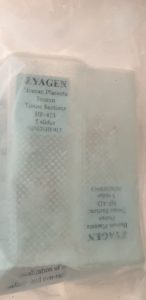The use of the amorphous kinds of drugs is a contemporary method for the enhancement of bioavailability. At the identical time, the excessive cooling charge wanted to acquire the metastable amorphous state usually prevents its investigation utilizing standard laboratory strategies comparable to differential scanning calorimetry, x-ray powder diffractometry. One of the methods to beat this downside will be the software of Fast Scanning Calorimetry. This technique permits direct willpower of the vital cooling charge of the soften and kinetic parameters of the crystallization for unhealthy glass formers.
In the current work, the amorphous states of dopamine hydrochloride and atenolol had been create utilizing Fast Scanning Calorimetry for the primary time. Critical cooling charges and glass transition temperatures of these drugs had been decided. Based on the values of the kinetic fragility parameter, dopamine hydrochloride glass will be thought-about robust, whereas atenolol glass is reasonably robust. Both model-based and model-free approaches had been employed to find out the kinetic parameters of chilly crystallization of dopamine and atenolol.
The outcomes had been in contrast with the information from isothermal crystallization experiments. The Nakamura crystallization mannequin offers the most effective description of the crystallization course of and can be utilized to foretell the long-time stability of the amorphous kinds of the drugs. The introduced approaches could discover purposes in predicting the storage time and selecting the optimum storage circumstances of the amorphous drugs liable to crystallization.
Interesterification is broadly employed as an efficient approach to change oils and fat. This examine makes use of palm-based oil (palm olein: palm kernel oil: palm stearin, 5:3:2, w/w/w) because the uncooked materials for the interesterification course of carried out in a pilot-scale packed mattress reactor. Enzymatic interesterification (EIE) was catalyzed by Lipozyme TL IM (813.Zero g) at 60℃ with response stream charge of 100 mL/min. It was demonstrated that these ribbon-like nanostructures are preserved so long as the heating temperature is positioned under the Tg of the matrix.
Chemical interesterification (CIE) was catalyzed utilizing sodium methoxide (0.Three wt%) as catalyst at 105 °C for 30 min. The outcomes confirmed that the EIE fat had decrease stable fats content material tendency in comparison with that of CIE fat. The crystallization onset temperature was increased in EIE fat (23.09℃) in comparison with that of CIE (19.08℃). The outcomes had been in line with the crystallization kinetics whereby the Avrami Ok constants of EIE fat had been increased than that of CIE fat at numerous temperatures, indicating speedy crystallization and immediate nucleation.
Long PEO-based nanoribbons generated in a polystyrene matrix via reaction-induced microphase separation adopted by a quick crystallization course of
A dispersion of elongated nanostructures with a excessive facet ratio in polymer matrices has been reported to offer a fabric with precious properties comparable to mechanical energy, barrier impact and form reminiscence, amongst others. In this examine, we present the process to attain a distribution of elongated crystalline nanodomains in a PS matrix using the self-assembly of amphiphilic block copolymers (BCP). The chosen BCP was polystyrene-block-polyethylene oxide (PS-b-PEO). It was dissolved at 10 wt% in a styrene (St) monomer and the mix was slowly photopolymerized over 4 days at room temperature, till the response was arrested by vitrification.
This mix was initially homogeneous and nanostructuration passed off in an early stage of the polymerization consequently of the microphase separation (MS) of PEO blocks. Thus, the time window between the onset of crystallization and the vitrification of the matrix was nearly 4 days, permitting all micelles to have the chance to couple to a rising nanostructure. As a outcome, a inhabitants of nanoribbons with common lengths surpassing 10 μm dispersed in a PS matrix was obtained. If the fabric is heated above this temperature, softening of the matrix permits the breakup of the molten PEO nanoribbons as a consequence of Plateau-Rayleigh instability.


